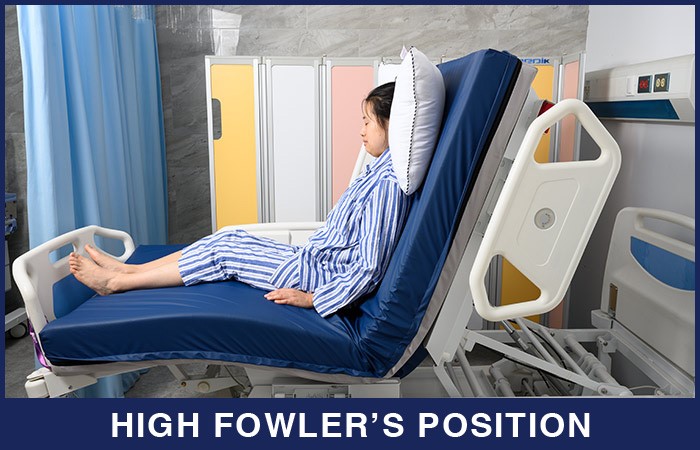Ati fundamentals carugda custom exam
Ati fundamentals carugda custom exam
Total Questions : 34
Showing 10 questions Sign up for moreA nurse is gathering data from a client who is experiencing hypokalemia due to nausea, vomiting, and diarrhea.
Which of the following symptoms should the nurse anticipate?
Explanation
Choice A rationale
Hyperactive reflexes are not typically associated with hypokalemia. Hypokalemia, or low potassium levels in the blood, can cause muscle weakness, fatigue, constipation, and arrhythmia.
Choice B rationale
Extreme thirst is not a typical symptom of hypokalemia. It is more commonly associated with conditions such as diabetes.
Choice C rationale
A weak, irregular pulse is a common symptom of hypokalemia. Low levels of potassium can affect heart function, leading to abnormal heart rhythms.

Choice D rationale
Hyperactive bowel sounds are not typically associated with hypokalemia. In fact, constipation is a common symptom of this condition.
A nurse is examining the laboratory results for a client who had a urinalysis.
Which finding should the nurse communicate to the provider?
Explanation
Choice A rationale
An elevated white blood cell (WBC) count in a urinalysis can indicate an infection or inflammation in the body. A count of 10 is higher than the normal range, which is typically 0 to 5 WBCs per high power field.
Choice B rationale
Occasional casts in the urine are not typically a cause for concern. Casts are tiny tube-shaped particles that can form due to kidney conditions, but occasional casts can be normal.
Choice C rationale
A pH of 5.0 is within the normal range for urine pH, which is typically between 4.6 and 8.0.
Therefore, this result would not typically need to be communicated to the provider.
Choice D rationale
Dark amber color of the urine can be a sign of dehydration, but it can also be influenced by certain foods, medications, and health conditions. It is not typically a result that needs to be communicated to the provider.
An LPN is reviewing the laboratory test results for a client who has an elevated temperature.
The nurse should identify which of the following findings is a manifestation of dehydration.
Select all that apply.
Explanation
Choice A rationale
An increased blood osmolarity, such as 260 mOsm/kg, can be a sign of dehydration. When the body is dehydrated, the concentration of solutes in the blood can increase, leading to higher osmolarity.
Choice B rationale
Hypotension, or low blood pressure, is not typically a sign of dehydration. In fact, dehydration can often cause blood pressure to increase due to the body’s efforts to compensate for the lack of fluid.
Choice C rationale
A high urine specific gravity, such as 1.035, can indicate dehydration. This measurement reflects the concentration of solutes in the urine, and a high value can mean that the body is conserving water due to dehydration.
Choice D rationale
An elevated blood sodium level, such as 150 mEq/L, can be a sign of dehydration. When the body is dehydrated, the concentration of sodium in the blood can increase.
A nurse is caring for a client who has acute dehydration and is receiving IV fluids.
Which of the following laboratory values indicates to the nurse that the current treatment regimen is effective?
Explanation
Choice A rationale
A sodium level of 165 mEq/L is higher than the normal range and could indicate that the body is still dehydrated.
Choice B rationale
A hematocrit of 62.5 is higher than the normal range and could suggest that the body is still dehydrated.
Choice C rationale
A urine specific gravity of 1.020 is within the normal range and suggests that the body is rehydrating effectively.
Choice D rationale
A potassium level of 3.2 mEq/L is lower than the normal range and could suggest that the body’s electrolyte balance has not yet been restored.
An LPN is reviewing the laboratory tests results for a client who has an elevated temperature.
The nurse should identify which of the following findings is a manifestation of dehydration.
Select all that apply.
Explanation
Choice A rationale
Increased glucose levels can be a sign of dehydration. When the body is dehydrated, it can cause blood sugar levels to rise.
Choice B rationale
A blood creatinine level of 0.6 mg/dL is within the normal range and does not typically indicate dehydration.
Choice C rationale
An increased blood osmolarity, such as 260 mOsm/kg, can be a sign of dehydration. When the body is dehydrated, the concentration of solutes in the blood can increase, leading to higher osmolarity.
Choice D rationale
A high urine specific gravity, such as 1.035, can indicate dehydration. This measurement reflects the concentration of solutes in the urine, and a high value can mean that the body is conserving water due to dehydration.
A nurse is contributing to the plan of care for a client who is postoperative following peritoneal lavage for peritonitis.
The client has a nasogastric tube to low-intermittent suction and closed-suction drains in place.
Which of the following interventions should the nurse include in the plan?
Explanation
Choice A rationale
Irrigating the nasogastric tube with tap water is not recommended. Tap water is not sterile and can introduce bacteria into the stomach, potentially causing infection.
Choice B rationale
Marking abdominal girth once daily is not sufficient for a client who is postoperative following peritoneal lavage for peritonitis. This client is at risk for complications such as abscess formation and bowel obstruction, which can cause rapid changes in abdominal girth. Therefore, abdominal girth should be measured more frequently.
Choice C rationale
Placing the client in a high Fowler’s position is the correct intervention. This position, which involves the client sitting up at an angle of 45 to 60 degrees, can help reduce pressure on the abdominal area, promote better lung expansion, and facilitate drainage of gastric contents, thus reducing the risk of aspiration.

Choice D rationale
Ambulating the client twice daily is not appropriate in this case. The client has just undergone a major abdominal surgery and has a nasogastric tube and closed-suction drains in place. Early ambulation may not be feasible due to the risk of dislodging the drains or causing pain and discomfort.
A nurse is caring for a child who has acute diarrhea and reports that he is thirsty.
Which of the following fluids should the nurse give the child?
Explanation
Choice A rationale
Broth is a clear liquid that can help replace sodium and chloride lost through diarrhea. However, it does not contain the necessary amounts of other electrolytes such as potassium and bicarbonate, which are also commonly lost in diarrhea.
Choice B rationale
Apple juice is not a good choice for a child with acute diarrhea. It is high in sugars and can worsen diarrhea. It also does not contain the electrolytes needed to replace those lost through diarrhea.
Choice C rationale
Cherry gelatin is not a suitable choice. While it is a clear liquid that can help with hydration, it does not contain the necessary electrolytes to replace those lost through diarrhea. It is also high in sugars, which can worsen diarrhea.
Choice D rationale
Pedialyte is the best choice for a child with acute diarrhea who reports that he is thirsty. It is a rehydration solution specifically designed to replace fluids and electrolytes lost through diarrhea.
A nurse is caring for a patient in a long-term care facility who is receiving enteral feedings via an NG tube.
Which of the following actions should the nurse complete prior to administering the tube feeding? (Select all that apply)
Explanation
Choice A rationale
Auscultating stomach sounds is an important step before administering a tube feeding. This helps to ensure that the gastrointestinal system is functioning properly and can handle the feeding.
Choice B rationale
Warming the formula to body temperature can help to increase the comfort of the client during the feeding. However, it is not a necessary step and can be skipped if the client does not have a preference.
Choice C rationale
Assisting the client to sit in an upright position is crucial before administering a tube feeding. This position reduces the risk of aspiration, which can occur if the formula enters the lungs.
Choice D rationale
Discarding residual gastric contents is not recommended. Instead, the nurse should check for residual before the feeding, and if the volume is above the predetermined threshold, the feeding should be delayed and the healthcare provider notified.
A nurse is assisting with teaching a client about dietary choices.
Which of the following should be included in the teaching?
Explanation
Choice A rationale
Ground beef is not the best choice for a client learning about dietary choices. While it is a source of protein, it is also high in saturated fats, which can contribute to heart disease and other health problems. Choice B rationale
Raw vegetables are a good source of fiber and various vitamins and minerals. However, they should be washed thoroughly before consumption to remove any potential contaminants.
Choice C rationale
Fruit with the skin can be a good source of fiber and vitamins. However, like vegetables, they should be washed thoroughly before consumption.
Choice D rationale
High fiber cereals are a great choice for a healthy diet. They can help to regulate bowel movements, lower cholesterol levels, and control blood sugar levels.

A nurse is caring for an older adult client.
The client has an increased risk for dehydration due to which of the following physiological changes that can occur with aging?
Explanation
Choice A rationale
A decrease in systolic blood pressure is not a physiological change that increases the risk of dehydration in older adults.
Choice B rationale
An increase in saliva production does not occur with aging and does not increase the risk of dehydration.
Choice C rationale
An increase in the percentage of body water does not occur with aging. In fact, total body water decreases with age, which can contribute to an increased risk of dehydration.
Choice D rationale
A decrease in kidney function is a common physiological change that occurs with aging. This can lead to a decreased ability to concentrate urine and conserve water, increasing the risk of dehydration.
You just viewed 10 questions out of the 34 questions on the Ati fundamentals carugda custom exam Exam. Subscribe to our Premium Package to obtain access on all the questions and have unlimited access on all Exams. Subscribe Now



